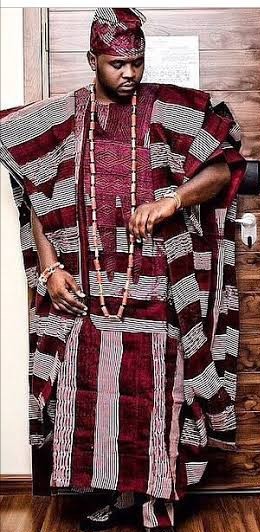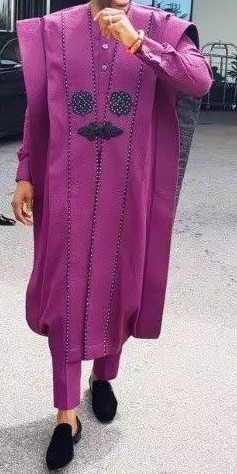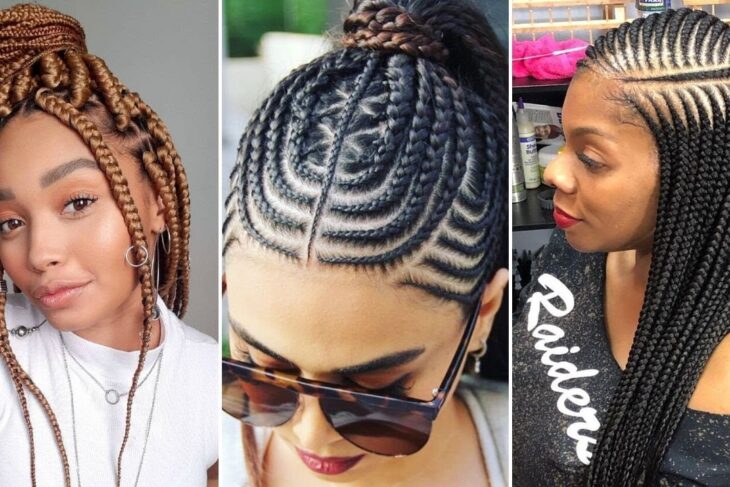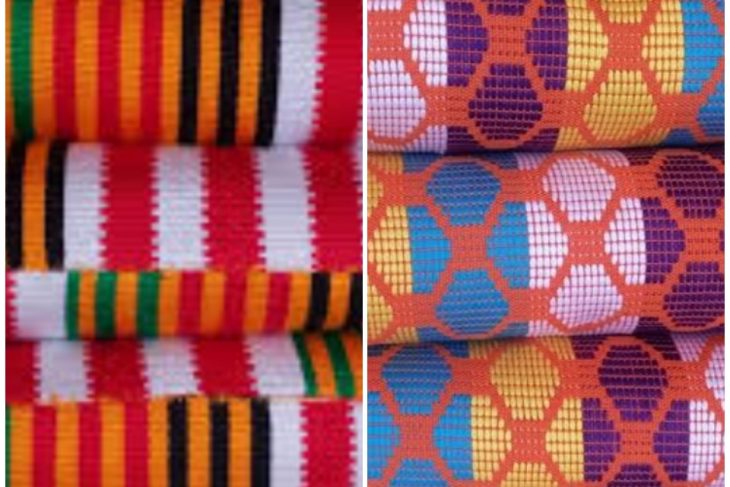
Amidst some cultures in southwestern and Northern part of Nigeria, Agbada is a profound male attire. The name ‘agbada is adopted by the Yorubas located in southwest Nigeria while other regions have their unique names. It is a four-piece attire also worn among the Republic of Benin, West Africa. It consists of a large, free-flowing outer robe. It is worn on top of inner top attire with a pair of long trousers (sokoto) which is always accompanied by a cap (fìla).
Agbada is a big, loose-fitting, ankle-length garment which has a rectangular centerpiece, flanked by wide sleeves. The centerpiece which is usually covered front and back with elaborate embroidery has a neck hole (orun) and big pocket (apo) on the side. Depending on the individual’s financial capacity and preference, the density and extent of the embroidery vary considerably. The length of the agbada also vary : some prefer a full length attire while the contemporary styles are mostly dominated by ankle length attires.

There are two major types of agbada among the Yoruba, namely the casual (agbada iwole) and ceremonial (agbada amurode). Commonly called Sulia or Sapara, the casual agbada is smaller, less voluminous, and often made of light, plain cotton. The Sapara came into being in the 1920s and is named after a Yoruba medical practitioner, Dr. Oguntola Sapara, who felt uncomfortable in the traditional agbada. He therefore asked his tailor not only to reduce the volume and length of his agbada, but also to make it from imported, lightweight cotton. The ceremonial agbada, on the other hand, is bigger, more ornate, and frequently fashioned from expensive and heavier materials.
Beneath the agbada is the undervest called buba by the yorubas. Bubas may either be in form of a loose round-neck shirt with elbow-length or long sleeves or dansiki, a loose, round-neck, sleeveless smock. This is accompanied by the Yoruba trousers, all of which have a drawstring for securing them around the waist. The trousers also come in a variety of shapes and lengths. The two most common trousers for the agbada are sooro, a close-fitting, ankle-length, and narrow-bottomed piece; and kembe, a loose, wide-bottomed one that reaches slightly below the knee, but not as far as the ankle. However, the contemporary trousers are more fitted and of latest fashion.

Different types of caps are worn to complement the agbada of which the most popular is gobi. It is cylindrical in shape which is about ten inches long. When worn, it may be compressed and shaped forward, sideways, or backward. Another very popular style cap is ‘abeti aja’ which literally means “the dog-eared one,” It has a crestlike shape and derives its name from its hanging flaps that may be used to cover the ears in cold weather. Otherwise, the two flaps are turned upward in normal wear. The labankada is a bigger version of the abetiaja, and is worn in such a way as to unveil the contrasting color of the cloth used as underlay for the flaps. Some fashionable men may add an accessory to the agbada outfit in the form of a wraparound (ibora).

The largest and most elaborately embroidered is called agbada nla or girike. The most valued fabric for the ceremonial agbada is the traditionally woven cloth popularly called aso ofi (narrow-band weave) or aso oke (northern weave). The term aso oke reflects the fact that the Oyo Yoruba of the grassland to the north introduced this type of fabric to the southern Yoruba. It also hints at the close cultural interaction between the Oyo and their northern neighbors, the Nupe, Hausa, and Fulani from whom the former adopted certain dresses and musical instruments.

Today, Agbada has gained much popularity as a fashionable attire among wide classes of people in West Africa, the African diaspora, and very recently, even among Bantu people in East, Southern and Central Africa. Although It is popularly worn by the Yoruba race in Nigeria, it is not exclusive to the Yoruba, being found in other parts of Africa as well. It is known as mbubb (French, boubou) among the Wolof of Senegambia and as riga among the Hausa and Fulani of the West African savannah from whom the Yoruba adopted it. The general consensus among scholars is that the attire originated in the Middle East and was introduced to Africa by the Berber and Arab merchants from the Maghreb (the Mediterranean coast) and the desert Tuaregs during the trans-Saharan trade that began in the pre-Christian era and lasted until the late nineteenth century.













